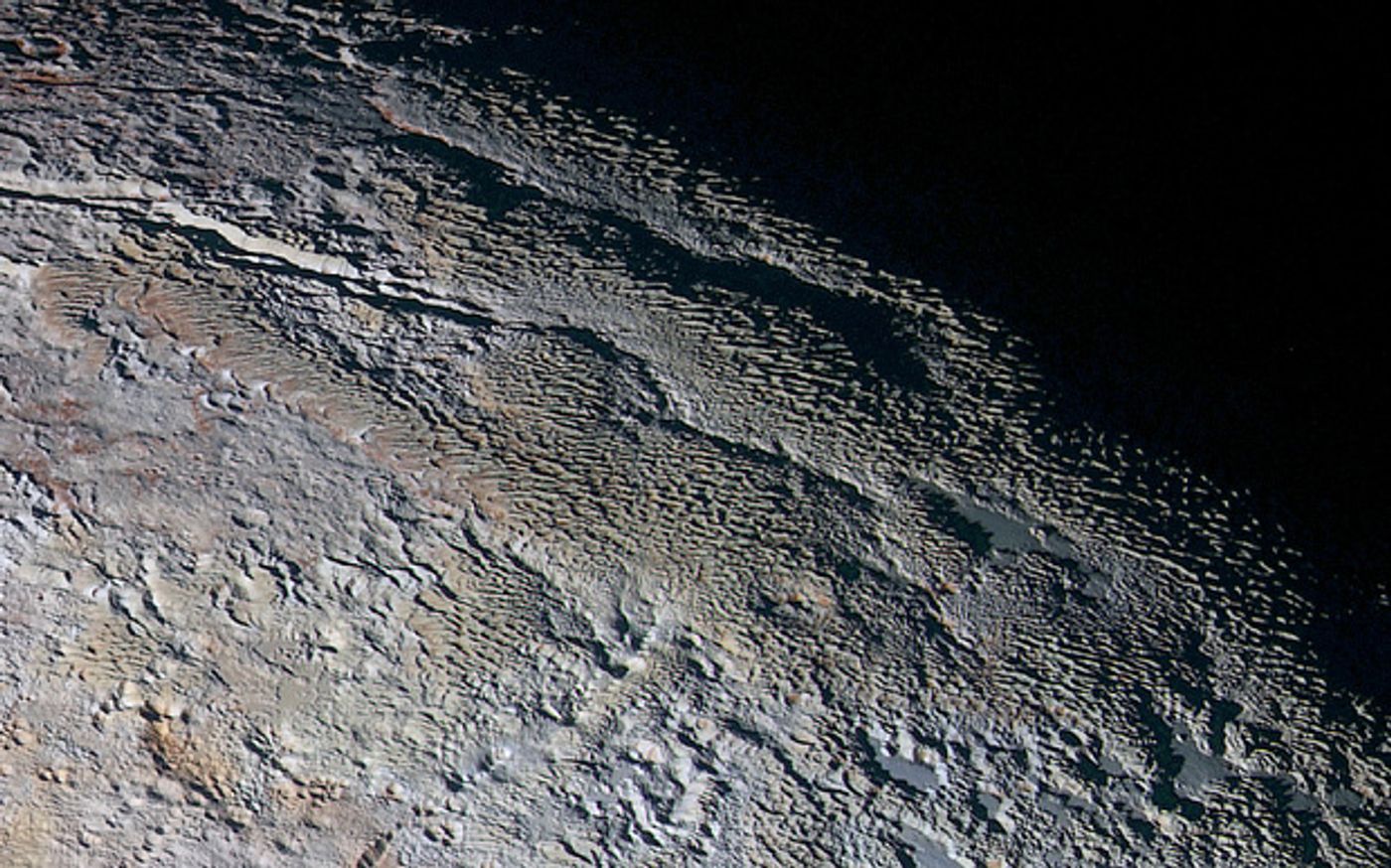Does Pluto's Surface Hide an Ocean Underneath?
It was about one year ago that NASA’s New Horizons spacecraft made its historic flyby of the dwarf planet Pluto in the outskirts of our solar system, but scientists have been observing scientific data for months following that event.
More data revealed by New Horizons suggests that there could be an ocean swishing around underneath the surface, as deep as 300 kilometers. Even if not anymore, such an under-surface ocean might have existed at some point in time.

Image Credit: NASA/New Horizons
The idea, which was proposed by researchers from Brown University, comes from theories proposed by looking at the many photos of Pluto’s surface. The findings are published in the Geophysical Research Letters.
It’s dully noted that Pluto, as a whole, would have contracted if there was once liquid on the planet and it disappeared, and there are no signs of any contraction, which would mean deformities and even cracking in Pluto’s various mountainous terrains and smooth heart-shaped plain.
“Thanks to the incredible data returned by New Horizons, we were able to observe tectonic features on Pluto’s surface, update our thermal evolution model with new data and infer that Pluto most likely has a subsurface ocean today,” said Noah Hammond, the study’s lead author and a graduate student in Brown’s Department of Earth.
On the contrary, Pluto shows signs of having expanded, which indicates that either the liquid is still there, or it hasn’t been gone for long.
“What New Horizons showed was that there are extensional tectonic features, which indicate that Pluto underwent a period of global expansion,” Hammond said. “A subsurface ocean that was slowly freezing over would cause this kind of expansion.”
New Horizons reportedly spotted many signs of tectonic expansion, which is in line with ice formation. After all, ice is not as dense as water because when ice forms, water molecules expand.
The report also notes that there really aren’t any other likely ways Pluto could have expanded. The opposing theory that Pluto’s moons had a gravitational pull on the dwarf planet’s surface and caused expansion really hold no water.
So you might be wondering why the surface of Pluto hasn’t melted yet if the inner layers have.
Just to touch on that, the researchers have also noted in their statement that radiation from Pluto’s core probably produced enough heat to melt through several of Pluto’s inner layers, but the outer layers are kept nice and chilled from the insulating properties of frozen methane and nitrogen, which help prevent the melting of all of Pluto’s layers.
Pluto is indeed a very interesting entity that we have to investigate further, but it isn’t easy because it’s so far away. It took us almost nine and a half years for New Horizons to get the data it did, and now it’s rocketing out into the Kuiper Belt where it’ll move on to a new target.
All we have to go by right now are the many photographs that show us the many personalities of Pluto.
Source: Brown University








